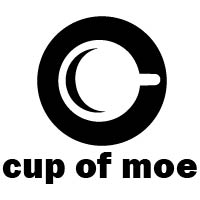We may earn money or products from the companies mentioned in this post.
“The Blair Witch Project” ushered found footage into the mainstream, revolutionizing a subset of the horror genre. Unfortunately, that sector has remained fairly stagnant since the 1999 production. Justin Cole’s recently released “The Upper Footage,” however, has bumped the found footage concept in a different direction. The unique film employs traditional elements while depicting a realistic narrative. It’s inventive, ambitious, and delivers a thought-provoking societal message.
Justin Cole’s 2013 flick “The Upper Footage” begins as a relatively innocent night of debauchery. Will Erixon arrives at buddy Blake Pennington’s New York penthouse. The pair smoke a joint, hop in a limo with Pennington’s girlfriend Taylor Greene and pal Devon Petrovsky. They drink, make racist and homophobic jokes, yell at minorities, and solidify their status as bratty kids with too much dough. Yet their carefree evening takes a turn for the unthinkable when their drug dealer can’t get them any cocaine. Until that point, the biggest problem they’d faced was spilling a line of coke on the minibar. First world problems for sure.
Reluctantly, they hit up a bar downtown, and Blake’s sneer conveys that he’s descending a few rungs on the class ladder. At the bar, Devon picks up Jackie and brings her back to Blake’s pad. Jackie displays amazement at the penthouse, and it’s readily evident she isn’t nearly as wealthy as Pennington and company. Having scored some cocaine, they bust out the white stuff and Jackie admits she hasn’t tried it before. Jackie’s bender results in an overdose, and like the upstanding affluent pack they’re framed as, Blake, Devon, Will, and Taylor frantically scratch their hopped up heads. Naturally, they embark on a rambling mission to dispose of Jackie’s body.
“The Upper Footage” contains a number of shocking elements which contribute to its innovation. Primarily, the found footage portrayal of realistic events sets the film apart from the blockbusters littering box-office marquees. “Paranormal Activity: The Marked Ones,” and similar releases focus on the paranormal. What makes “The Upper Footage” so creepy is the reliance on real-world events and characters that seem plausible. Unfortunately, their banter could easily be found on college campuses across the country; the drug-centric speak, disregard for consequences, racism, and sexism are sadly prevalent in today’s culture.
Further fostering the negative image of affluenza is the representation of Pennington, Erixon, Petrovsky, and Greene as completely unredeemable characters. Even when Will protests at the notion of dumping Jackie’s body, it’s on the grounds that they can’t establish a cohesive story. Taylor appears to reject hiding the corpse but goes along nonetheless. Granted, she’s strung out on coke, but that’s not exactly the greatest excuse. The horror in “The Upper Footage” lies in the practicality of the plot, the fact that the accidental overdose and indifference toward human life arise in news stories daily. Additionally, the shaky camera draws viewers in, adding a participatory element. Cinematography does this so well that the audience feels uncomfortable throughout the entire episode.
Despite the gripping plot and groundbreaking foundation, it’s a bit uneven. The dialogue, while mostly candid, at times feels forced. During the limo ride, the ethnic insults initially feel natural, but the scene drags out, assuming a mechanical nature. Similarly, the middle section shuffles its feet, plagued by uneventful chitchat. The brief monotony doesn’t mar the overall product, but attention might slip for a couple minutes.
Surprisingly, one of the biggest possible drawbacks is what “The Upper Footage” does well: inspire discomfort. Unlike the predictable scares of “The Blair Witch Project” and “Paranormal Activity,” Cole’s riveting rollercoaster incites a skin-crawling disgust. The despicable, self-centered jet setters prance about in their dream world. They don’t have to worry about money, lack all compassion, and focus entirely upon themselves. When their dream becomes a momentary nightmare, they even lash out at one another, proving their friendships phony. Though they may live in New York City, the players on this stage are absolutely unaware of their own surroundings; and they don’t care. They are carefree and careless.
That being said, the latter quip is also a strength of the movie. “The Upper Footage” caused confusion as to whether the depicted events were real, to the point where Cole issued a statement. To remain spoiler free, the answer won’t be disclosed here, but the link will be provided. Aside from cinematography and plot, the marketing campaign and delivery system are visionary as well. Cole used a viral marketing campaign, and posters of Jackie’s pixelated face while also encouraging mainstream media outlets to pick up the story. Rentals are available on Vimeo, a really fantastic idea and hopefully one more widely utilized for indie flicks in the future. Overall, despite a sluggish bout, “The Upper Footage” overcomes minor bumps to successfully leave viewers perplexed, disturbed, and pondering the issue of affluenza long after the footage fades to black.
This post may contain affiliate links. We are a participant in affiliate programs such as the Amazon Services LLC Associates Program, an affiliate advertising program designed to provide a means for us to earn fees by linking to Amazon.com and affiliated sites. However, all products are thoroughly tested and reviews are honest and unbiased.
